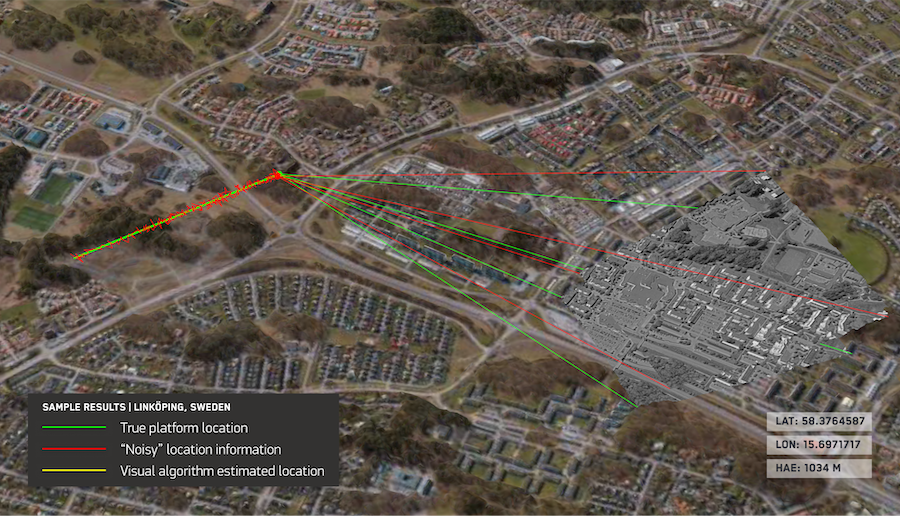
Maxar Intelligence has launched Raptor, a powerful software suite that enables autonomous drones to navigate and extract accurate ground coordinates in the absence of GPS.

This technology transforms the resilience and reliability of unmanned systems, enabling autonomy at scale across warfighting, humanitarian and commercial operations for customers across the world.
Designed for lightweight integration with any autonomous platform, Raptor products use only a drone’s native camera and Maxar’s 90 million-plus sq. km. of global 3D terrain data to help the platform navigate with extreme precision and extract accurate ground coordinates in real-time without GPS. Raptor can also operate at night and in low-terrain environments. No additional hardware is required.

The image above shows how Raptor Guide enables an autonomous system to navigate with precision even without GPS. The green line represents the drone’s true location in the real world on a specific flight path. The red line shows the location information sent by the drone without GPS and without using Guide. The yellow line shows the location information sent by the drone when using Raptor Guide without GPS. You can see it delivers a far more accurate reading with Raptor Guide, which would ensure that the platform is navigating with more precision.

The Raptor suite of software solutions includes:
- Raptor Guide: Vision-based positioning software loaded directly onto an autonomous platform to determine its aerial position at a demonstrated absolute accuracy of <10 m RMSE.
- Raptor Sync: Software that georegisters the full motion video feed from the drone’s on-board camera with Maxar’s 3D terrain data in real-time, enabling intelligence fusion, multi-domain interoperability across different sensors and accurate ground coordinate extraction at a demonstrated absolute accuracy of <3 m.
- Raptor Ace: Software solution installed on commodity laptop equipment that works alongside drone controllers, enabling operators to extract real-time target ground coordinates from full-motion aerial video feeds with a demonstrated absolute accuracy of <3 m.
Raptor represents a fundamentally new solution on the market, providing significant advantages over most visual-based navigation alternatives:
- Cost- and power-efficient: Raptor software products are deployable on off-the-shelf hardware and require minimal initial integration. Alternative navigation solutions typically require additional hardware.
- Delivers against complex mission profiles: Built on a true 3D representation of the operational terrain, Raptor products operate at night, in any season, and at altitudes as low as 120 m. Maxar’s 3D global terrain data is regularly updated.
- Enables autonomy at scale: Because Raptor software anchors sensor data against a common geospatial foundation and works with existing drone cameras, the technology makes it possible for different unmanned systems to work together for joint operations regardless of the software or hardware platform.
- Works on existing cameras: A dedicated downward-facing camera consumes precious payload space and adds to the platform’s weight and power consumption. Raptor software works with the UAS’s existing optics, including both forward and side-looking cameras.
By eliminating reliance on GPS, Raptor software unlocks the full potential of autonomous systems—from powering truly joint multi-domain operations as part of a digital battlefield to large-scale delivery systems in urban areas where knowing the precise coordinates of your drop-off location is critical to getting the job done,” said Peter Wilczynski, Chief Product Officer at Maxar Intelligence. “Raptor will change the game for customers across the defense and commercial sectors. This software uses Maxar’s unique 3D global terrain data to ensure that autonomous systems get the job done no matter how much GPS interference they face.”
